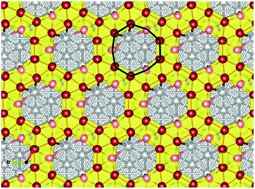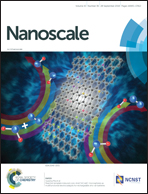Borophene layers on an Al(111) surface – the finding of a borophene layer with hexagonal double chains and B9 nonagons using ab initio calculations
Abstract
We studied the stability of several borophene layers on an Al(111) surface and found a structure called 9R using ab initio calculations. This layer competes with χ3 and β12 borophene layers and is made up of boron nonagons that form a network of hexagonal boron double chains. Remarkably, it has no B6 hexagon unlike other borophene layers. All three layers lie significantly lower in energy than the honeycomb layer recently reported on the Al(111) surface [W. Li, et al., Sci. Bull., 2018, 63, 282]. We discuss the structural stability and electronic structures of different borophene layers in light of the role of the filling factor f of boron atoms in boron hexagons in a honeycomb layer as well as charge transfer from the Al substrate to the borophene layer as obtained from the Bader charge analysis. The electron localization function shows that the 9R layer has two-center bonding within the nonagon rings and three-center bonding between the rings. Calculations of the phonon spectra show that a free 9R layer is dynamically stable raising the hope of its isolation. The electronic structure shows that in all cases the borophene layer is metallic.



 Please wait while we load your content...
Please wait while we load your content...